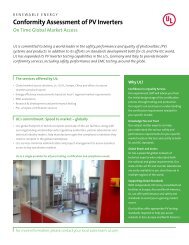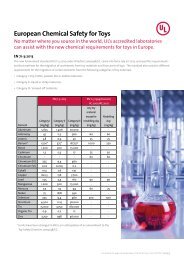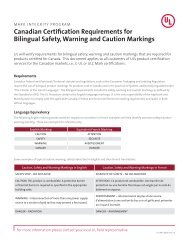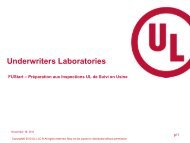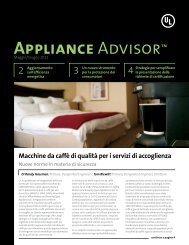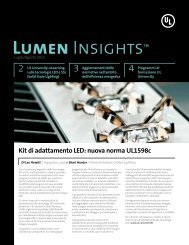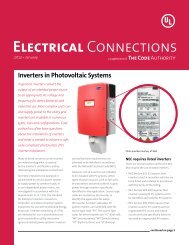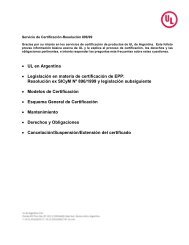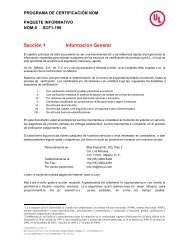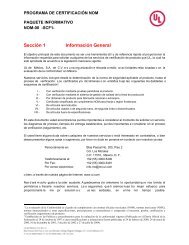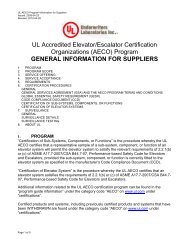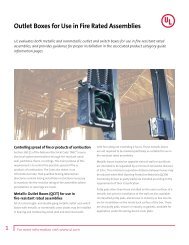Performance of Special Extinguishment Agents for ... - UL.com
Performance of Special Extinguishment Agents for ... - UL.com
Performance of Special Extinguishment Agents for ... - UL.com
Create successful ePaper yourself
Turn your PDF publications into a flip-book with our unique Google optimized e-Paper software.
Issued: September 30, 2008<br />
Two different hose streams were used <strong>for</strong> this portion <strong>of</strong> the investigation. A straight stream attack at<br />
22 gallons per minute and a wide spray attack at 15 gallons per minute. Similar hose stream<br />
application methods were incorporated while attacking with each type <strong>of</strong> stream<br />
With the use <strong>of</strong> the measurable heat release rate reduction from the attack, we were able to determine<br />
differences between a water only attack and six (6) different agents.<br />
The time to reduce the heat release rate <strong>for</strong> residential room fires using a 1 percent concentration <strong>of</strong><br />
different water additives was measured to be marginally quicker while employing a 15 gpm wide spray<br />
pattern and using the test methods used on the noted fuel package.<br />
No significant differences were seen in the 22 gpm straight stream attack.<br />
Fixed Nozzle Wood Crib Fire Testing on Agent Solutions<br />
Wood crib fires were utilized as an accepted repeatable fuel package <strong>for</strong> the evaluation <strong>of</strong> the<br />
suppression per<strong>for</strong>mance <strong>of</strong> the applied agents.<br />
<strong>UL</strong> 711, 6A wood crib was chosen as a challenging, repeatable fuel package. A single nozzle<br />
positioned above the crib was used <strong>for</strong> applying the water. Water application occurred when the mass<br />
loss <strong>of</strong> the wood crib was 45 percent <strong>of</strong> the initial mass.<br />
A series <strong>of</strong> water only tests yielded a control point at which suppression <strong>of</strong> the crib would be<br />
terminated. This value was 17 percent <strong>of</strong> the heat release rate value at the time <strong>of</strong> the initial<br />
suppression.<br />
Once the suppression attack was terminated, regrowth <strong>of</strong> the wood crib’s deep seated fire was<br />
monitored until the point <strong>of</strong> the crib’s collapse. This allowed a slow, steady rise <strong>of</strong> the crib’s heat<br />
release rate to be characterized.<br />
All six agents from the previous section were evaluated at 1.0 and 0.5 percent concentrations when<br />
mixed with water.<br />
Using the test methods employed, it was determined that no significant difference in per<strong>for</strong>mance<br />
exists <strong>for</strong> the 0.5 and 1.0 percent concentrations <strong>of</strong> the agents tested. Neither the time to reduce the<br />
heat release rate to 17 percent <strong>of</strong> the initial heat release rate, nor the regrowth heat release rate after<br />
suppression termination were considered to be significantly different when <strong>com</strong>paring water only to<br />
the agents and concentrations tested.<br />
ii



